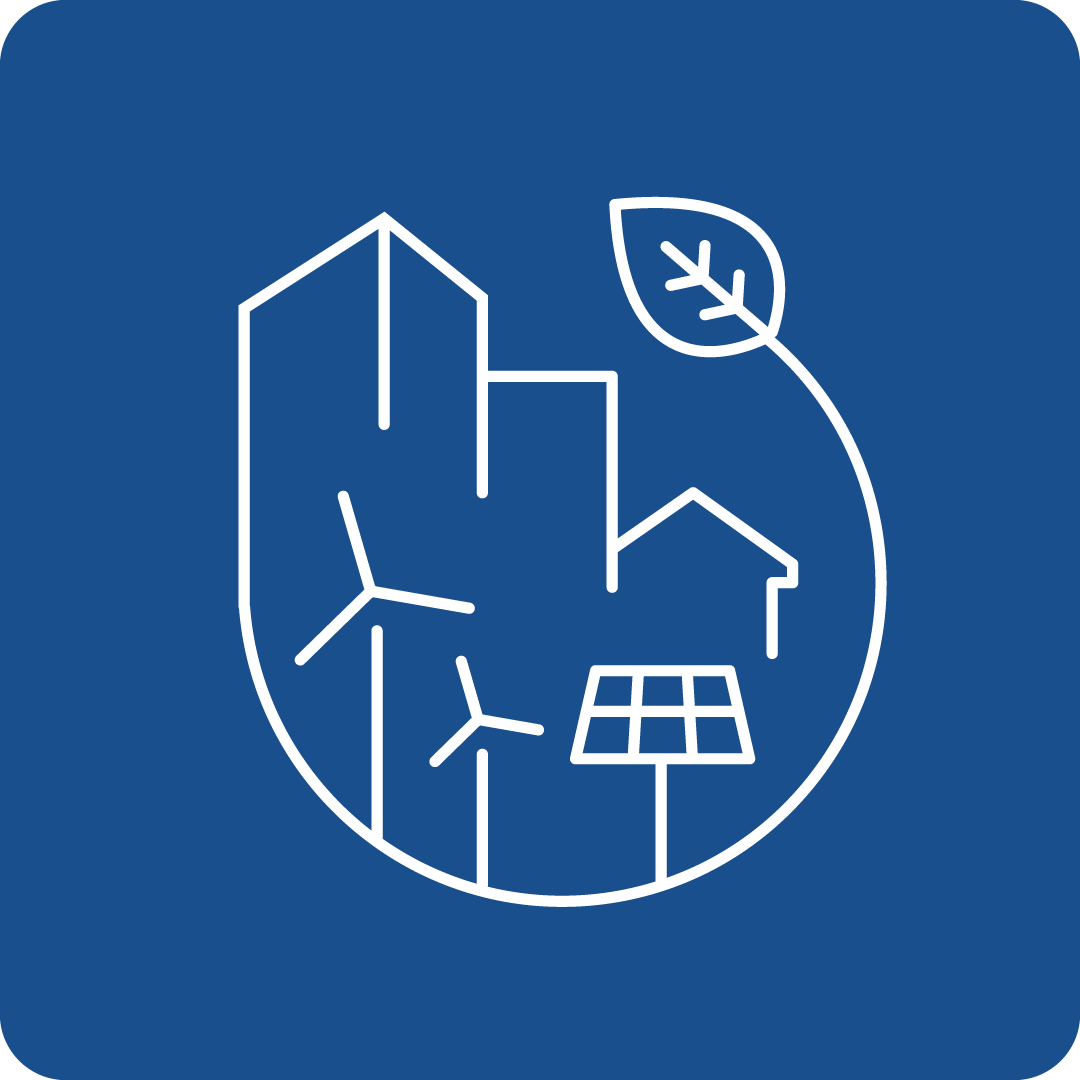Filter Search for grants
Call Navigation
Deadline expired
The deadline for this call has expired.
Call key data
Hydrogen-powered aviation
Funding Program
Horizon Europe: Cluster 5 - Climate, Energy and Mobility
Call number
HORIZON-CL5-2023-D5-01-07
deadlines
Opening
13.12.2022
Deadline
20.04.2023 17:00
Funding rate
70% (NPO:100%)
Call budget
€ 20,000,000.00
Estimated EU contribution per project
between€ 8,000,000.00 and € 10,000,000.00
Link to the call
Link to the submission
Call content
Call objectives
Hydrogen-powered commercial aviation is today on a promising path towards climate neutrality by 2050, with European industry setting 2035 as an expected date of entry into service of the first hydrogen-powered commercial aircraft. While the Horizon Europe Clean Hydrogen partnership focuses on the production side (e.g. developing new fuel cells and hydrogen storage technologies), the Clean Aviation partnership addresses the integration and demonstration of disruptive technologies, including ones on hydrogen-powered aviation and subsequent aircraft architectures. However, there is currently a clear research and innovation gap for the phase in-between. Most notably, this gap relates to the demonstration of hydrogen refuelling and supply from air transport ground infrastructures to the aircraft, with follow-on demonstrations of ground-based aircraft movements (e.g. taxiing). In particular, hydrogen refuelling entails significant operational issues, safety risks and other barriers (e.g. scalability) at both air transport ground infrastructure and aircraft levels. This has the potential to create a bottleneck for Europe to proceed on the path to climate neutrality, lower emissions and reducing Europe’s dependency on oil and fossil fuels, which are clear objectives of the Versailles Declaration and REPowerEU. At the same time, demonstration pilots of hydrogen-powered aircraft ground movements need to start urgently, in order to be able to achieve full operations of hydrogen-powered airplanes in the EU by 2035.
In this context, building on good practices, studies and research projects (e.g. Horizon 2020 green airport projects, Horizon 2020 ENABLE-H2), as well as other policy initiatives (e.g. Fit for 55 and ReFuelEU Aviation), actions should address all of the following aspects:
- Assessing and validating potential liquid hydrogen demand models at air transport ground infrastructures in Europe and globally, considering also multimodality issues at airports arising from the use of hydrogen in road and rail transport. The techno-economic assessment should also consider the energy supply side and be aligned with the targets, investments and regulatory aspects addressed by REPowerEU, ReFuelEU Aviation, the Alternative Fuels Infrastructure Regulation and the Trans-European Networks for Transport and Energy (TEN-T and TEN-E).
- Testing and demonstrating innovative and safe ground-based refuelling, storage and supply systems for liquid hydrogen at air transport ground infrastructures, going beyond the state-of-the-art and in view of future standardisation, with focus on airports and vertiports serving national, intra-European and/or regional routes. Consideration should also be made to the hydrogen production (including on-site), supply, materials performance, storage and refuelling systems, with the concurrent use other liquid fuels (e.g. kerosene and sustainable aviation fuels) and electricity at air transport ground infrastructures, in order to enable zero-emission airport operations along the entire value chain, from multimodal road/rail connections, to ground handling and aircraft ground movements.
- Developing and demonstrating new aircraft-based hydrogen refuelling technologies, with emphasis on operational feasibility, safety, interoperability, standardisation, scalability and cost optimisation, to showcase a clear technical and business case. The technologies should be compatible with various propulsion technologies and aircraft concepts (e.g. different types of commercial aircraft and architectures, including VTOL and UAV, as also addressed in the Horizon Europe Clean Aviation partnership.
- Performing small-scale demonstration pilots of zero-emission hydrogen-powered aircraft ground movements, in one or two airports (e.g. taxi-in / taxi-out), in view of deploying the new technologies and solutions to various aircraft types and airports across Europe.
- Initiating and developing new standards and certification procedures, for the new technologies and systems to be scalable and serve different types of aircraft and air transport ground infrastructures of various sizes, locations and capacities for both passenger and freight transport.
The EU’s Hydrogen Strategy prioritises renewable hydrogen (low-carbon hydrogen being considered a transitional technology) and should be taken into account to develop the proposals, considering, inter alia, how the hydrogen will be produced and supplied.
The topic aims to exploit synergies with the Horizon Europe Clean Aviation and Clean Hydrogen partnerships, for the roll-out of transformative aircraft liquid hydrogen propulsion technologies, with an eye towards future large-scale demonstrations and real-life airborne plane trials during the later phase of the Clean Aviation partnership. The retained proposals, should, during the implementation phase, regularly exchange information with the Technical Committee and the Governing Board of the Clean Aviation and Clean Hydrogen partnerships respectively (in-line with articles 65 and 80 of the COM(2021) 87).
For standardisation activities and in view of future certification of airports and vertiports and aircraft, including VTOL and UAV, the participation of EASA is deemed necessary to address airport and aircraft certification issues. The involvement of airports, vertiports and aircraft manufacturers in the project activities is required. Since regional and short haul aviation is likely the first segment to start the transition to hydrogen-based fuel technology, the involvement of regional and insular airports in the project will be an asset.
In line with the Union’s strategy for international cooperation in research and innovation, the participation of airports and regulatory bodies outside of the European Union is encouraged.
Projects should collaborate with the Clean Hydrogen Joint Undertaking on aspects that require integration of hydrogen and are expected to contribute and participate to the activities of the TRUST database and the hydrogen observatory.
read more
Expected results
- Innovative ground-based refuelling and supply systems for liquid hydrogen at air transport ground infrastructures, with the potential to be up-scaled at system level by 2027.
- Transformative aircraft-based hydrogen refuelling technologies, with emphasis on safety, standardisation and scalability to various types of aircraft concepts (including Vertical Take Off and Landing aircraft (VTOL) and Unmanned Air Vehicles (UAV)).
- Hydrogen-powered aircraft ground movements, demonstrated and scalable across airports of different sizes, locations and capacities in Europe.
- Comprehensive and validated liquid hydrogen demand and supply-matching models at air transport ground infrastructures in Europe and globally, towards a potential entry into service of hydrogen aircraft by 2035.
- New standards and certification procedures for the roll-out of the new technologies and solutions at large scale, in EU Member States/Associated countries and on the TEN-T network.
read more
Eligibility Criteria
Regions / countries for funding
Moldova (Moldova), Albania (Shqipëria), Armenia (Հայաստան), Bosnia and Herzegovina (Bosna i Hercegovina / Босна и Херцеговина), Faeroes (Føroyar / Færøerne), Georgia (საქართველო), Iceland (Ísland), Israel (ישראל / إِسْرَائِيل), Kosovo (Kosova/Kosovë / Косово), Montenegro (Црна Гора), Morocco (المغرب), North Macedonia (Северна Македонија), Norway (Norge), Serbia (Srbija/Сpбија), Tunisia (تونس /Tūnis), Türkiye, Ukraine (Україна), United Kingdom
eligible entities
EU Body, Education and training institution, International organization, Non-Profit Organisation (NPO) / Non-Governmental Organisation (NGO), Other, Private institution, incl. private company (private for profit), Public Body (national, regional and local; incl. EGTCs), Research Institution incl. University, Small and medium-sized enterprise (SME)
Mandatory partnership
Yes
Project Partnership
To be eligible for funding, applicants must be established in one of the following countries:
- the Member States of the European Union, including their outermost regions
- the Overseas Countries and Territories (OCTs) linked to the Member States
- third countries associated to Horizon Europe - see list of particpating countries
Only legal entities forming a consortium are eligible to participate in actions provided that the consortium includes, as beneficiaries, three legal entities independent from each other and each established in a different country as follows:
- at least one independent legal entity established in a Member State; and
- at least two other independent legal entities, each established in different Member States or Associated Countries.
Any legal entity, regardless of its place of establishment, including legal entities from non-associated third countries or international organisations (including international European research organisations) is eligible to participate (whether it is eligible for funding or not), provided that the conditions laid down in the Horizon Europe Regulation have been met, along with any other conditions laid down in the specific call topic.
A ‘legal entity’ means any natural or legal person created and recognised as such under national law, EU law or international law, which has legal personality and which may, acting in its own name, exercise rights and be subject to obligations, or an entity without legal personality.
Specific cases:
- Affiliated entities — Affiliated entities (i.e. entities with a legal or capital link to a beneficiary which participate in the action with similar rights and obligations to the beneficiaries, but which do not sign the grant agreement and therefore do not become beneficiaries themselves) are allowed, if they are eligible for participation and funding.
- Associated partners — Associated partners (i.e. entities which participate in the action without signing the grant agreement, and without the right to charge costs or claim contributions) are allowed, subject to any conditions regarding associated partners set out in the specific call conditions.
- Entities without legal personality — Entities which do not have legal personality under their national law may exceptionally participate, provided that their representatives have the capacity to undertake legal obligations on their behalf, and offer guarantees to protect the EU’s financial interests equivalent to those offered by legal persons.
- EU bodies — Legal entities created under EU law including decentralised agencies may be part of the consortium, unless provided for otherwise in their basic act.
- Joint Research Centre (‘JRC’)— Where provided for in the specific call conditions, applicants may include in their proposals the possible contribution of the JRC but the JRC will not participate in the preparation and submission of the proposal. Applicants will indicate the contribution that the JRC could bring to the project based on the scope of the topic text. After the evaluation process, the JRC and the consortium selected for funding may come to an agreement on the specific terms of the participation of the JRC. If an agreement is found, the JRC may accede to the grant agreement as beneficiary requesting zero funding or participate as an associated partner, and would accede to the consortium as a member.
- Associations and interest groupings — Entities composed of members (e.g. European research infrastructure consortia (ERICs)) may participate as ‘sole beneficiaries’ or ‘beneficiaries without legal personality’. However, if the action is in practice implemented by the individual members, those members should also participate (either as beneficiaries or as affiliated entities, otherwise their costs will NOT be eligible.
other eligibility criteria
Activities are expected to achieve TRL 6 by the end of the project.
For the Technology Readiness Level (TRL), the following definitions apply:
- TRL 1 — Basic principles observed
- TRL 2 — Technology concept formulated
- TRL 3 — Experimental proof of concept
- TRL 4 — Technology validated in a lab
- TRL 5 — Technology validated in a relevant environment (industrially relevant environment in the case of key enabling technologies)
- TRL 6 — Technology demonstrated in a relevant environment (industrially relevant environment in the case of key enabling technologies)
- TRL 7 — System prototype demonstration in an operational environment
- TRL 8 — System complete and qualified
- TRL 9 — Actual system proven in an operational environment (competitive manufacturing in the case of key enabling technologies, or in space)
If projects use satellite-based earth observation, positioning, navigation and/or related timing data and services, beneficiaries must make use of Copernicus and/or Galileo/EGNOS (other data and services may additionally be used).
Additional information
Topics
Relevance for EU Macro-Region
EUSAIR - EU Strategy for the Adriatic and Ionian Region, EUSALP - EU Strategy for the Alpine Space, EUSBSR - EU Strategy for the Baltic Sea Region, EUSDR - EU Strategy for the Danube Region
UN Sustainable Development Goals (UN-SDGs)
![]()
![]()
![]()
Additional Information
All proposals must be submitted electronically via the Funders & Tenders Portal electronic submission system (accessible via the topic page in the Search Funding & Tenders section). Paper submissions are NOT possible.
Proposals must be complete and contain all parts and mandatory annexes and supporting documents, e.g. plan for the exploitation and dissemination of the results including communication activities, etc.
The application form will have two parts:
- Part A (to be filled in directly online) contains administrative information about the applicant organisations (future coordinator and beneficiaries and affiliated entities), the summarised budget for the proposal and call-specific questions;
- Part B (to be downloaded from the Portal submission system, completed and then assembled and re-uploaded as a PDF in the system) contains the technical description of the project.
Annexes and supporting documents will be directly available in the submission system and must be uploaded as PDF files (or other formats allowed by the system).
The limit for a full application (Part B) is 45 pages.
Contact
To see more information about this call, you can register for free here
or log in with an existing account.
Log in
Register now


